#woodstock stage announcements 1969
Explore tagged Tumblr posts
Video
youtube
(via Death In Vegas - Dirt (1997)
11 notes
·
View notes
Text
youtube
Song Review: Crosby, Stills, Nash & Young - “Helplessly Hoping” (Live, Sept. 20, 1969)
“Helplessly hoping her helicopter hovers nearby - lost in the smog.”
So said David Crosby in introducing Crosby, Stills, Nash & Young’s Sept. 20, 1969, performance of “Helplessly Hoping” at the Fillmore East.
Anyone familiar with the band’s Woodstock set or 4 Way Street knows what happens here. Neil Young is not on stage. Crosby and Graham Nash nail their parts. Stephen Stills plays finger-style guitar and sings off-key.
This isn’t yet the sound of one of the era’s finest harmony groups. This is the sound of three new friends learning to sing together and - as the playful asides and breaking down in laughter illustrate - having a high time in doing so.
“Helplessly Hoping” announces the Oct. 25 release of Live at the Fillmore East, 1969. Despite its prominent warts, this long-lost gem is a gift; the rest of the gig is likely to be the same.
“We were four people reveling in the different sounds we were producing, quietly singing together on the one hand, then rocking like fuck for the rest of the concert,” Nash said in a statement.
Grade card: Crosby, Stills, Nash & Young - “Helplessly Hoping” (Live 9/20/69) - B
9/9/24
#Youtube#crosby stills nash and young#david crosby#stephen stills#graham nash#neil young#helplessly hoping#the byrds#buffalo springfield#the hollies#live at the fillmore east 1969
6 notes
·
View notes
Text
brown acid
1. A reference to the Woodstock Festival in 1969, when stage announcements were made by legendary radio disc jockey Wavy Gravy, telling people that some of the brown-colored blotter acid (LSD) circulating the crowd was giving people negative hallucinations, causing freakouts.
2. A bad drug experience
3. Something that was supposed to be pleasurable but turned out nightmarish.
1 note
·
View note
Text
MUSIC FESTIVALS: SOCIAL MEDIA VS ENJOYING THE EXPERIENCE
By Josefina Zúñiga
If you ask your mom to think of a music festival she would probably talk about Viña del Mar’s Music festival, which was a huge event in years past. But in other countries music festivals have come to represent a full experience with multiple stages, featuring more than ten bands per day and often showcasing the debut of amazing new artists.
The 1969 Woodstock Rock Festival in the United States brought together about 500,000 people for three days of music (and perhaps a few other things). Legendary artists like The Who, Santana, Jimi Hendrix, Janis Joplin, and many others rocked the stage. Thousands of young people gathered to celebrate rock music.
From the same spirit of rock music and youth culture, in the 90´s Lollapalooza was borned. This Festival has expanded to other countries, including Chile, where it’s been held annually since 2011.
While many national rock lovers were initially excited about Lollapalooza and thought it was a cool experience to attend in its early years, now some argue it has lost its focus. Nowadays, the festival gathers a lot of incluencers that don’t go because of the music but to showcase their exotic outfits and take pictures. Actually, now it exists a “VIP area” which it costs a lot of money and it reunites all of the influencers and people who can afford the high-priced ticket. These topic adds some rock lovers complaints of many girls wearing band tees without any knowledge of the band.
Returning to the main point, Lollapalooza allows ticket purchases before the lineup is announced. In the past, tickets guaranteed seeing a rock band. Now, many buy tickets early to ensure their social media experience. This behavior is similar to the trend of people going to any concert to record with their phones, instead of actually being present and enjoying the concert.
So, what kind of people are you? Are you the one recording everything, or are you immersed in the experience? Is this the decline of music festivals or just the beginning of a new era? Although you agree or disagree on Lollapalloza attendants’ behaviour we must say it is a privilige to host an international music festival and it is a unique opportunity to see different artists in the same place.
0 notes
Audio
Carlos Santana: Guitar Gregg Rolie: Vocals, Keyboard David Brown: bass José "Chepito" Areas: Timbales, Congas, Percussion, Irumpet Mike Carabello: Timbales, Congas, Percussion Mike Shrieve: Drums 1 - Waiting 2 - Evil Ways 3 - You Just Don't Care 4 - Savor 5 - Jingo 6 - Persuasion 7 - Soul Sacrifice 8 - Fried Neck Bones And Some Home Fries Chip Monck (Stage Announcements) – "Wheat Germ, Holly Has Your Bag"
30 notes
·
View notes
Text
Betty Davis: They Say She’s Different
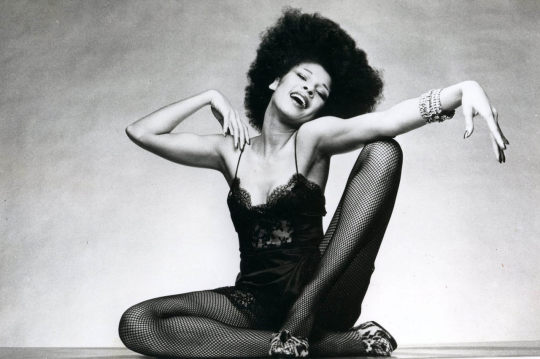
It appears that everything anyone has written for the old Music Aficionado site has now disappeared from the web. A random Facebook post has prompted me to re-purpose this story, written in 2016, about my favorite funketress. **********
To this day, the name Betty Davis – Betty with a “y,” that is – remains best known to connoisseurs of Miles Davis minutiae and ‘70s funk obsessives. While it’s true that Betty played an important off-stage role in the career of the jazz trumpeter, to whom she was married for just a year, and she undoubtedly made some of the best hardcore funk records of her era, she deserves to be recognized beyond the relatively narrow provinces of the jazzbo and the crate-digger.
Uncompromising, intelligent, brazen, aggressive, and not incidentally gorgeous, sexually provocative, and a fashion plate always ahead of the curve, Betty was a prophetic figure. Spawned by the explosion of music, fashion, and alternative culture of the late ‘60s, and by concurrent leaps in black consciousness and feminism, she was a take-no-prisoners singer and writer who presented herself as something new, rich, and strange with her self-titled debut album in 1973.
There were some badass contemporaries working the soul and funk trenches– gutter-tongued diva Millie Jackson and one-time James Brown paramour Yvonne Fair leap to mind immediately – but they seemed to be adapting tropes previously worked by male singers in the genres. Betty still sounds like something new: a tough, smart, demanding woman who reveled in pleasure and insisted on satisfaction, unafraid to claim what she wanted.
Despite the fact that she was associated with some high-profile male musician friends and lovers – beyond Davis, the roll call included Hugh Masekela, Jimi Hendrix, Sly Stone, Mike Carabello, Eric Clapton, and Robert Palmer – she was no groupie or bed-hopping climber. Possessed of her own self-defining vision, she was producing her own records and leading a tight, flexible little band by the end of her brief run.
In 1976, after completing four splendid albums (only three of which were released at the time), she disappeared, not only from the music business but from the public eye entirely. What happened? It’s an old story that many women in the industry will recognize: Her record company didn’t know what to do with her, and wanted her to tone down her act. Betty Davis wasn’t having any of that, thank you, and she hit the damn road.
She was born Betty Mabry in Durham, NC, in 1945. She grew up country, and was exposed to down-home, get-down music early. On the title track of her second album, They Say I’m Different, she runs down the artists who served as inspirations: Big Mama Thornton, John Lee Hooker, Lightnin’ Hopkins, Howlin’ Wolf, Albert King, Chuck Berry. The blues, in one form or another, is the backbone of her style.
Her family relocated to Pittsburgh when she was young, but at 16 she left home for the Fashion Institute of Technology in New York. There she was hurtled into the roiling cultural vortex of the Village. She took up modeling, working for the toney Wilhelmina agency, and began running with a posse of similarly disposed, equally beautiful women who called themselves the “Electric Ladies.” Sound familiar? One of her closest cohorts was Devon Wilson, for many years a notorious consort of Jimi Hendrix known for her freewheeling, outré sex- and drug-saturated lifestyle.
Mabry began to try her hand at singing, and cut a few self-penned singles. They were in an old-school mold in terms of structure, but her very first 45 hints at things to come. “Get Ready For Betty,” a 1964 track released by Don Costa (discoverer of Paul Anka and Trini Lopez and a key arranger for Frank Sinatra), is stodgy early-‘60s NYC R&B to its core, but its message is pointed: “Get out my way, girl, ‘cause I’m comin’ to take your man.”
She also made a stolid romantic duet ballad with singer Roy Arlington and, produced by cult soul man Lou Courtney, a homage to the Cellar, the New York club where she DJed. But she didn’t start reaching the upper echelon of the music biz until one of her songs, a hymn to Harlem called “Uptown,” was cut by the Chambers Brothers for their smash 1968 album The Time Has Come, which also included the psychedelic soul workout “Time Has Come Today.”
The Chambers association probably secured a singles deal for her at Columbia Records, and her first session for the major label was produced by her former live-in boyfriend, South African trumpeter Masekela, in October 1968. By that time, she had split with him: A month earlier, she had married a far more famous horn player, Miles Davis, whom she had met in 1967. Davis and his regular producer Teo Macero would head her second session for Columbia in May 1969.
Those two dates were released for the first time as The Columbia Years 1968-1969 earlier this month by Light in the Attic, the independent label that has restored Betty’s entire catalog to print over the last decade. While devoted fans can be grateful that the work is finally seeing the light of day, it does not make for easy listening, for it was clearly made by people groping in the dark.
Betty’s artistic persona was at that point completely unformed, and so her male Svengalis did their best to mold the clay in their hands, with feeble results. Masekela evidently completed just three tracks, two of which, “It’s My Life” and “Live, Love, Learn,” were issued as a flop single. The homiletic song titles give the game away; the music, straight-up commercial soul backed by a large group (which included Wilton Felder and Wayne Henderson of the Jazz Crusaders and Masekela), has nothing original to say.
The date with Miles is a bigger waste, if a more spectacular one. The personnel couldn’t have been more glittering: Hendrix sidemen Billy Cox and Mitch Mitchell; ex-Detroit Wheels guitarist Jim McCarty; bassist Harvey Brooks, studio familiar of Bob Dylan and former member of the Electric Flag; and Davis’ then-current or future band mates Herbie Hancock, Wayne Shorter, John McLaughlin, and Larry Young.
But nothing jells. The material is either weak (Betty’s directionless original “Hangin’ Out” is the best of a bad lot) or incongruous (lumbering covers of Cream’s “Politician” and Creedence’s “Born On the Bayou”). Worse, the jazzers are unable to lay down anything resembling a solid soul-rock foundation, and even reliable timekeeper Mitchell blows the groove on more than one occasion. Miles gets impatient with his spouse at one point, rasping over the talk-back, “Sing it just like that, with the gum in your mouth and all, bitch.”
Apparently intended as demos, the failed tracks were consigned to the tape library. By late ��69, Miles and Betty’s marriage was history. She left her mark on his music: She appeared on the cover of his cover of his 1968 album Filles de Kilimanjaro and inspired its extended track “Mademoiselle Mabry” (based on the chords that opens Hendrix’s “The Wind Cries Mary”) and “Back Seat Betty” from his 1981 comeback album The Man With the Horn.
Moreover, she moved him toward the flash style that would dominate his music through the mid-‘70s, by exposing him to the slamming music of Hendrix and Sly and exchanging his continental suits for psychedelic pimp togs. Would we know Bitches Brew, On the Corner, and Agharta without Betty Davis? Maybe, maybe not.
For her part, Betty remained in the wings for a while. She collaborated on demos for the Commodores; in London, she modeled, worked on songs for Marc Bolan of T. Rex, and declined a production offer from her then-paramour Clapton. Drifting back to New York, she met Santana percussionist Carabello. They became involved romantically, and in 1972 she relocated to the San Francisco Bay area, where Carabello’s local connections led to the formation of a stellar band to back her on a debut album.
One reads the credits for Betty Davis in awe. The rhythm section was the Family Stone’s dissident, puissant rhythm section, bassist Larry Graham and drummer Greg Errico (who also produced). Original Santana guitarist Neal Schon, future Mandrill axe man Doug Rodrigues, founding Graham Central Station organist Hershall Kennedy, and keyboardist and ace Jerry Garcia collaborator Merl Saunders filled out the instrumentation. The Pointer Sisters, Sylvester, and Kathi McDonald were among a large platoon of backup vocalists.
Issued in 1973 by Just Sunshine Records, an independent label owned by Woodstock Festival promoter Michael Lang (who also released a set by another unique woman, folk singer-guitarist Karen Dalton), Betty Davis was one hell of a coming-out party. Since her abortive Columbia dates, she had developed a unique vocal attack that could leap from a velvety croon to a Tina Turner-like shriek in a nanosecond. The stomping funk of the studio band backed her up to the hilt.
Like Turner, she was one Bold Soul Sister. The lust-filled opening invitation “If I’m in Luck I Might Get Picked Up” announces that a new game was afoot. The statement of romantic/sexual independence “Anti Love Song,” the lovers’ chess match “Your Man My Man,” and the self-explanatory “Game is My Middle Name” offer up a startling, hard-edged new model of a hard-funking female vocalist.
The album’s most affecting track may be “Steppin in Her I. Miller Shoes,” Davis’ level-headed elegy for her sybaritic friend Devon Wilson, who sailed out a window at the Chelsea Hotel in 1971. “She coulda been anything that she wanted…Instead she chose to be nothing,” Davis sings, implying that route wouldn’t be one she would take herself.
“If I’m in Luck” grazed the lower reaches of the R&B singles chart and the album failed to reach the LP rolls at all, but Davis was undaunted. For 1974’s They Say I’m Different, she took the producer’s reins, which she would hold for the rest of her career. While the backup lineup is less glitzy (though Saunders, Pete Escovedo, and Buddy Miles, on guitar no less, appear), the support is still sizzling; crackling drums and burbling clavinet put over a set of songs that may have been even stronger than those heard on her debut.
No one who hears “He Was a Big Freak” is likely to ever forget it; it’s a startling dissection of a masochistic relationship -- inspired by Jimi Hendrix, and not, as many have assumed, by Miles Davis (“Everyone knows that Miles is a sadist,” Betty remarked later). Almost as notable are “Don’t Call Her No Tramp,” a prescient condemnation of what we now call slut-shaming, and the autobiographical title track, with slicing slide guitar work by Cordell Dudley.
Different and its attendant singles tanked, but Betty managed to maintain her profile with live gigs noteworthy for their uninhibited bawdiness, on-stage abandon, and the star’s Egyptian-princess-from-outer-space wardrobe sense. By early 1974 she had assembled a hot, lean road band that included her cousins Nickey Neal and Larry Johnson on drums and bass, respectively, plus keyboardist Fred Mills and guitarist Carlos Morales. This lineup would back her on her last two albums.
The end of Just Sunshine’s distribution deal liberated Davis, who, at the suggestion of then-boyfriend Robert Palmer, inked with Palmer’s label Island Records. The company released Nasty Gal in 1975, and it may be Davis’ best-executed work. The pared-down backing lets the songs shine, and there are good ones here: The shameless title song, the vituperative blast at the critics “Dedicated to the Press,” and the out-front ultimatum for sexual satisfaction “Feelins” get right up in the listener’s face. The most surprising track is the ballad “You and I,” an unexpected songwriting reunion with Miles, orchestrated by the trumpeter’s famed arranger Gil Evans.
It’s a tremendous album, and Betty supported it with live shows that ate the funk competition alive. A bootleg of an especially out-there set recorded at a festival on the French Riviera in 1976 literally climaxes with Nasty Gal’s “The Lone Ranger,” an in-the-saddle heavy breather that Davis wraps up by feigning a loud orgasm.
One should remember that at this particular juncture, Madonna was studying dance at the University of Michigan.
But Nasty Gal faded with hardly a trace, and Davis’ relationship with Island swiftly became fractious. It’s easy to see why the label declined to issue her final album, originally called Crashin’ From Passion and ultimately released, after years as a bootleg, by Light in the Attic in 2009 as Is It Love or Desire. The collection, which leans heavily on songs about sex, doping, and heavy drinking, includes “Stars Starve, You Know,” an outright condemnation of the games record companies play:
They said if I wanted to make some money
I’d have to change my style
Put a paper bag over my face
Sing soft and wear tight fitting gowns
They don’t like the way I’m lookin’
So it’s hard for my agent to get me bookin’s
Unless I cover up my legs and drop my pen
And commit one of those commercial sins…
Oh hey hey Island
And that was all she wrote. Until writers began to seek her out in the new millennium as her records became available again, Betty Davis was an invisible woman, one who had blazed a trail that other talents, such as Prince and Madonna, would blaze more profitably after her. She was definitively ahead of her time.
Asked by one writer what she had done since leaving music, Davis, who turns 71 on July 26, responded with the most tragic thing one can imagine any artist saying: “Nothing really.”
9 notes
·
View notes
Text
this date in music history
Today in music in history...
August 17th 1955 - Elvis Presley Elvis Presley released what would become his first No.1 hit, 'I Forgot to Remember to Forget / Mystery Train'. It hit the top of the country charts several months later and stayed there for 5 weeks.
1959 - Miles Davis American jazz trumpeter Miles Davis released Kind of Blue which is regarded by many critics as jazz's greatest record, Davis's masterpiece, and one of the best albums of all time. Its influence on music, including jazz, rock, and classical genres, has led writers to also deem it one of the most influential albums ever recorded.
1960 - The Beatles The Beatles began their first Hamburg engagement at the Indra Club, Grosse Freiheit, Hamburg, West Germany, playing the first of 48 nights at the Club. The owner, Bruno Koschmider, asked The Beatles to "Mach Shau", or really put on a show, which led to the band screaming, shouting, and leaping about the stage and sometimes playing lying on the floor. John Lennon once appeared wearing only his underwear and on another occasion, wearing a toilet seat around his neck. The Beatles lodged in a single room behind the screen of a nearby movie house.
1964 - The Beatles Glasgow council in Scotland announced that all boys and men with Beatle styled haircuts would have to wear bathing caps after a committee was told that hair from 'Beatle-cuts' was clogging the pools filters.
1965 - The Byrds The Byrds were forced to cancel a concert during their UK tour at The Guildhall, Portsmouth when only 250 of the 4,000 tickets had been sold.
1968 - Doors The Doors started a four-week run at No.1 on the US album chart with Waiting For The Sun. The group's third album spawned their second US No.1 single, 'Hello, I Love You'.
1968 - Young Rascals The Rascals (formerly the Young Rascals), started a five week run at No.1 on the US singles chart with 'People Got To Be Free'. The group had thirteen US top 40 hits.
1969 - Woodstock Festival The final day of the 3 day Woodstock Festival took place at Max Yasgur's farm in Bethel, New York. Acts who appeared included Crosby, Stills Nash & Young, The Who, Jimi Hendrix, Ten Years After, John Sebastian, Sha Na Na, Joe Cocker, Country Joe and the Fish, The Band, Ten Years After, Johnny Winter and Paul Butterfield Blues Band. Over 186,000 tickets had been sold but on the first day the flimsy fences and ticket barriers had come down. Organisers announced the concert would be a free event, prompting thousands more to head for the concert.
1973 - Paul Williams Former Temptations singer Paul Williams was found dead in his car, after shooting himself. He owed $80000 in taxes and his celebrity boutique business had failed.
1974 - Eric Clapton Eric Clapton started a four-week run at No.1 on the US album chart with 461 Ocean Boulevard, a No.3 hit in the UK. The house featured on the album cover is 461 Ocean Boulevard in the town of Golden Beach, Florida near Miami where Clapton lived while making the album.
1979 - Anita Pallenberg The New York Post reported that Anita Pallenberg (the wife of Keith Richards) was linked to a witches coven in South Salem, New York where Richards owned a house. A policeman claimed he was attacked by a flock of black-hooded, caped people and a local youth claimed he had been invited by Pallenburg to take part in ‘pot smoking sex orgies’. Locals also claimed they found ‘ritualistic stakes’ and small animals that had been ‘sacrificed’ near the house.
1999 - Led Zeppelin Led Zeppelin topped a chart of Britain's most bootlegged musicians, compiled by the British Phonographic Industry (BPI), after identifying 384 bootleg titles featuring Led Zeppelin performances. The bootleg chart was complied from the BPI's archive of some 10,000 recordings seized over the past 25 years. The Beatles came in second with 320 entries, other acts listed included The Rolling Stones, Bob Dylan and Pink Floyd.
2008 - Jackson Browne Jackson Browne was suing US Republican presidential candidate John McCain for using one of his songs without permission. Browne claimed the use of his song Running on Empty in an advert was an infringement of copyright and would lead people to conclude he endorses McCain. Browne was seeking more than $75,000 (£40,000) in damages.
2009 - Pink Floyd A thief in New Zealand took the unusual step of leaving his contact details at the site of his crime. The man reserved a copy of Pink Floyd's The Wall at a record shop in Christchurch, leaving his name and phone number, before robbing the till. He was a regular customer at the shop and already had several records on order
2 notes
·
View notes
Text
Thelma Houston

Thelma Houston (née Jackson; born May 7, 1946) is an American singer and actress. She scored a number-one hit in 1977 with her recording of "Don't Leave Me This Way", which won the Grammy for Best Female R&B Vocal Performance.
Early life and career
Houston was born in Leland, Mississippi. Her mother was a cotton picker. She and her three sisters grew up primarily in Long Beach, California. After marrying and having two children, she joined the Art Reynolds Singers gospel group and was subsequently signed as a recording artist with Dunhill Records. She isn't related to the late Whitney Houston.
In 1969, Houston released her debut album, entitled Sunshower, produced, arranged and composed by Jimmy Webb except for one track. In 1971 she signed with Motown Records but her early recordings with them were largely unsuccessful. Her most notable single during that period was "You've Been Doing Wrong for So Long" which peaked at No. 64 on the US Billboard R&B chart in 1974. However Houston's vocal prowess on that track secured her a nomination for a Best Female R&B Vocal Performance. In 1973 Motown Productions announced a projected biographical film of Dinah Washington which would star Houston; however the project was dropped due to difficulties in getting clearance from Washington's relatives. In April 1974 Houston joined the cast of The Marty Feldman Comedy Machine, playing various characters during the show's skits. The show was canceled in August and for the next several years her work was limited to demo recordings and performing at small venues.
Houston took acting classes and received her first role in the 1975 made-for-television film Death Scream. In that same year Sheffield Lab released "I've Got the Music in Me" a Direct to disc recording by Thelma Houston and Pressure Cooker that went on to become a benchmark vinyl recording for audiophiles. The following year she recorded songs for the soundtrack of the film The Bingo Long Traveling All-Stars & Motor Kings starring Billy Dee Williams and James Earl Jones. In 1975 Houston appeared on the Golden Globe Award broadcast performing the nominated song "On & On" and also was featured in a tribute to Berry Gordy on that year's American Music Award broadcast singing "You've Made Me So Very Happy". That year Houston's version of "Do You Know Where You're Going To" was being set for single release when it was pulled and the song given to Diana Ross to serve as the theme song for the movie Mahogany. In 1976 Houston sang backing vocals for Motown labelmate Jermaine Jackson on his album My Name Is Jermaine.
"Don't Leave Me This Way" and Departure from Motown
Houston released her third solo album Any Way You Like It in 1976. The first single released was her version of Harold Melvin & the Blue Notes' 1975 song "Don't Leave Me This Way". In February 1977 the track hit Number 1 in the U.S. on the R&B and Club Play Singles charts, then in April 1977 on the Billboard Hot 100. "Don't Leave Me This Way" won Houston the Best Female R&B Vocal Performance at the Grammys for 1977. Besides its US success "Don't Leave Me This Way" became a hit in at least twelve countries, including the UK where it reached Number 13 despite the concurrent single release of the Harold Melvin & the Blue Notes original, which reached Number 5. Also in 1977 Houston teamed up with Jerry Butler to record the album Thelma & Jerry and that November 1977 she co-starred in the film Game Show Models. It was announced in February 1977 that Houston would star as Bessie Smith in a filmation of the play Me and Bessie, to be produced by Motown; after an announcement that December that Houston was set to portray Bessie Smith in a biopic to be produced in 1978 by Columbia Pictures nothing more was heard of the project.
The second single from Any Way You Like It was Houston's rendition of "If It's the Last Thing I Do", a standard written by Saul Chaplin and Sammy Cahn; the track had been recorded and prepped for single release in 1973 but canceled. The impact of "If It's the Last Thing I Do" was far less than that of "Don't Leave Me This Way", as the former fell short of both the R&B Top Ten and the Pop Top 40. With the lead single from her 1978 album The Devil in Me: "I'm Here Again", Houston returned to the style of "Don't Leave Me This Way" without recapturing the earlier single's success. Houston did enjoy considerable commercial success in 1978 via the inclusion of her track "Love Masterpiece" on the Thank God It's Friday soundtrack album which sold double platinum but her own album release that year Ready to Roll again failing to consolidate the stardom augured by "Don't Leave Me This Way". The album's second single: "Saturday Night, Sunday Morning", gradually accrued airplay entering the national charts in March 1979 and ascending as high as #34 (#19 R&B) that June. "Saturday Night, Sunday Morning" was issued on a new album by Houston: Ride to the Rainbow but the track's relative success was not enough to forestall Houston's planned departure from Motown.
1980s
Houston continued recording music into the 1980s, beginning with the RCA release Breakwater Cat which reunited her with Jimmy Webb who produced her debut single Sunshower and which like their earlier collaboration was a commercially overlooked critical success. During the December 22, 1984 Billboard magazine interview, Houston admitted to "'no real commercial success' since the single 'Don't Leave Me This Way' broke on the Pop charts in late 1976" indicating that the disco backlash had left her with "no real base of audience support" and that her current album Qualifying Heat, executive produced by Houston herself, was a concentrated initiative to restore her as a viable chart presence; the album featured three cuts from Jimmy Jam and Terry Lewis – including the single "You Used to Hold Me So Tight" – and production work from Glen Ballard, Dennis Lambert, Cliff Magness and – in his first known recording work – Lenny Kravitz (then billed as Romeo Blue), who each produced a cut apiece. "You Use to Hold Me So Tight" became Houston's most successful post-1970s release with a No. 13 R&B peak, but its parent album was a comparative failure – charting No. 41 R&B – and Houston would not cut another album for six years.
The constant ranking of her 1980s releases as moderate or minor R&B hits led Houston to concentrate on alternate exposure. After appearing in the independent film The Seventh Dwarf in 1979 Houston made guest-starring appearances into the mid-1980s in several popular television programs including Cagney & Lacey, Simon & Simon – a January 1986 appearance that featured her performing "You Used to Hold Me So Tight" – and Faerie Tale Theatre. Houston also appeared in the 1987 CBS after school special Little Miss Perfect (1987) – as "Prison Singer" – in the 1988 film And God Created Woman.
On the May 19, 1985 NBC broadcast Motown Returns to the Apollo Houston performed "What a Diff'rence a Day Makes" in the guise of Dinah Washington. Houston continued to contribute to movie soundtracks, recording "Keep It Light" for the 1985 film Into the Night and she remade Bill Withers' "Lean on Me" for the 1989 film entitled Lean on Me. Houston also co-wrote and sang back-up on the song "Be Yourself" for Patti LaBelle's 1989 album of the same title.
1990s
The Fall of 1990 saw the release of Houston's first album in six years, Throw You Down, a long-planned collaboration with producer Richard Perry which briefly extended Houston's career as a minor R&B chart presence. The title song reached No. 5 on the U.S. dance chart. A remix of "Don't Leave Me This Way" was released, and once again charted on the Hot Dance Club Play chart at No. 19 in 1995. Subsequent singles include "I Need Somebody Tonight" and "All of That".
In 1994, Houston participated in an AIDS benefit at New York's Algonquin Hotel, performing gospel music with Phoebe Snow, Chaka Khan and CeCe Peniston as "Sisters of Glory". Intended as a one-off performance troupe, the Sisters of Glory remained together – with the addition of Mavis Staples and Lois Walden, and without Chaka Khan – to perform at Woodstock '94. Houston performed with the Sisters of Glory for the Pope in Vatican City and in 1995 Houston, Phoebe Snow, CeCe Peniston, Lois Walden and Albertina Walker recorded the Warner Brothers album Good News in Hard Times as the Sisters of Glory.
Houston provided lead vocals on several tracks of guitarist Scott Henderson's 1997 Atlantic album, Tore Down House, and in 1998 she made cameo appearances in two films: in 54 Houston portrayed herself singing "Have Yourself a Merry Little Christmas" supposedly at Studio 54, and in Beloved Houston played 'One of The Thirty Women'.
Recent career
In 2000, Houston toured successfully throughout Australia in the stage musical version of Fame. In 2002 she again guested on a Scott Henderson album, providing lead vocals for two of the tracks on Well to the Bone. Upon returning to the U.S. Houston toured with Nile Rodgers and Chic, and was among the opening acts of the originally intended finale of Cher's Farewell Tour in Toronto on October 31, 2003. Houston regularly performs at Teatro ZinZanni in Seattle and San Francisco.
Her version of "Don't Leave Me This Way" continues to be popular today. In recent years she has been invited to sing this song on dozens of TV shows and specials including NBC's Today Show, ABC's Motown 45 and The Disco Ball...A 30-Year Celebration, and PBS' specials American Soundtrack: Rhythm, Love and Soul, Soul Superstars, and Old School Superstars. "Don't Leave Me This Way" was mentioned by VH1 as being among the greatest dance songs in 2000, and was ranked number eighty-six on the channel's countdown of The 100 Greatest One-Hit Wonders. She won an episode of the NBC show Hit Me, Baby, One More Time with her renditions of her own hit and "Fallin'" by Alicia Keys. On September 20, 2004, Houston's rendition of "Don't Leave Me This Way" was inducted into the Dance Music Hall of Fame in New York City.
On August 14, 2007, Houston released her first studio album in seventeen years, A Woman's Touch. The album was produced by Peitor Angell and features cover versions of songs by male artists such as Luther Vandross, Marvin Gaye, and Sting that Houston had been inspired by. The first single from the album was "Brand New Day". On August 20, 2007, Houston's 1984 album Qualifying Heat was reissued as an import title in the U.S. with a bonus track.
She sang "Don't Leave Me This Way" on American Idol on April 22, 2009, and on America's Got Talent on September 16, 2009.
On July 29, 2013, a collaboration between Thelma and Los Angeles-based producer Janitor, entitled "Enemy", premiered on SoundCloud. Several tracks followed, culminating in the release of an EP, "Forty-Two", in September. This is the first new material from Thelma Houston in six years.
On June 25, 2019, The New York Times Magazine listed Thelma Houston among hundreds of artists whose material was reportedly destroyed in the 2008 Universal fire.
She is featured on British singer songwriter Morrissey's new single "Bobby Don't you Think They Know", released on streaming platforms on 10th January 2020 from his album I Am Not a Dog on a Chain.
Discography
Albums
Dunhill release
1969: Sunshower No. 50 R&B
MoWest release
1973: Thelma Houston
Sheffield Lab release
1975: I've Got the Music in Me – with Pressure Cooker
Tamla (Motown) releases
1976: Any Way You Like It Pop No. 11, R&B No. 5
1977: The Devil in Me Pop No. 64, R&B No. 29
1978: Ready to Roll R&B No. 74
1979: Ride to the Rainbow Pop No. 204
Motown releases
1977: Thelma & Jerry – Thelma Houston and Jerry Butler Pop No. 53, R&B No. 20
1978: Two to One – Thelma Houston and Jerry Butler
1982: Reachin' All Around
RCA releases
1980: Breakwater Cat Pop No. 201
1981: Never Gonna Be Another One Pop No. 144, R&B No. 51
MCA releases
1983: Thelma Houston (1983)
1984: Qualifying Heat R&B No. 30
Reprise release
1990: Throw You Down
Italian-only release (Fonit Cetra CDL378)
1994: Thelma Houston (1994)
Shout Factory release
2007: A Woman's Touch
Other
2010: Divas of Disco: Live (with CeCe Peniston, Linda Clifford, A Taste of Honey and France Joli)
2013: Forty-Two (EP, with Janitor)
Singles
Filmography
Films
1975: Death Scream — Lady Wing Ding
1977: Game Show Models — Dana Sheridan
1979: The Seventh Dwarf
1988: And God Created Woman — prison singer
1998: 54 — herself
1998: Beloved — one of The Thirty Women
Television (guest)
1969: The Price of Fame – Guest singer, singing "Jumpin' Jack Flash"
1971: The Marty Feldman Comedy Machine — various characters
1975: The Golden Globe Award — Guest Singer
1980: The Two Ronnies - Guest singer, singing " The Candyman"
1985: Cagney & Lacey (5,11: Play it again, Santa) — Ellie Hendricks
1986: Simon & Simon — Venutia
1986: Tall Tales & Legends — Edna
1987: Little Miss Perfect — Ms. Bonner
Soundtracks
1976: The Bingo Long Traveling All-Stars & Motor Kings — "Steal on Home", "Razzle Dazzle"
1976: Norman... Is That You? — "One Out of Every Six"
1978: Thank God It's Friday — "Love Masterpiece"
1984: Getting Physical — "Hot Dance", "To Be Free"
1985: Into the Night — "Keep It Light"
1989: Lean on Me — "Lean on Me"
4 notes
·
View notes
Text
Rock and Roll Storytime #8: The Rolling Stones at Altamont (AKA One of the Worst Concert Disasters of All Time)
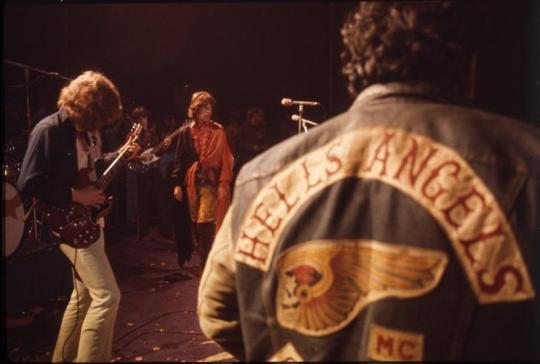
The year 1969 had been a hectic one, both for the world in general (with the continuing Vietnam War, the Chappaquiddick incident, and the moon landings) and especially for rock and roll (with the death of Brian Jones, Woodstock, and the Beatles starting to head full-steam down the road that led them to their break-up in April 1970). Capping off this year full of highs and lows, there was Altamont, which has been labelled by many as the death of the 60′s. At the very least, it certainly brought a premature end to the idealism that the youths of that generation held dear.
Lord knows, I will always say that Brian Jones should have had a chance to get back on his feet and I’m super salty that he’s dead, but honestly, I’m glad he missed out on this one.
Before I tell the story of Altamont though, I must ask… Whose bright idea was it to hire the Hell’s Angels as security for a Rolling Stones concert and pay them with $500 of beer?
Well, to answer that question, I’m going to have to begin this story with the ending of another. Truly, the roots of this ill-thought-out decision lies within events that had happened that summer.

I’ve mentioned Brian Jones already, but to give those of you who are new to this the rundown, Lewis Brian Hopkin Jones was the Stones’ first guitarist, and at the start, he was the brains of the band. Seven years, a bunch of internal conflict with Mick Jagger, Keith Richards, and Andrew Loog Oldham, a messy relationship with Anita Pallenberg, drug abuse and alcoholism, two drug trials, and a fuck-ton of stress later, Brian was in a state we’d call “mental exhaustion” (didn’t help that his physical health was shit too). Where in 1966 he was contributing some of the best parts of the Stones’ early music, such as the sitar on “Paint It Black”, in 1969, he’d rarely show up to the studio, and if he did, he would usually be too intoxicated to properly contribute. In fact, on Let It Bleed, he only contributed to two songs: “Midnight Rambler” (congas) and “You’ve Got the Silver” (autoharp).
In June 1969, the Stones decided they wanted to go on tour again, but then, they found out that due to the fact that Brian had twice been convicted of drug possession, it’d be unlikely that he could receive a visa to perform in the U.S.A., if at all. Ultimately, Mick and Keith decided that their best option would be to fire Brian, and so, on June 8, 1969, they went down to Brian’s home, Cotchford Farm, to tell him that he would no longer be with the group. According to those present, Brian had been expecting this, and in the various press releases, it was made to appear as if Brian had left the band on his own terms. His statement read, in part, “I no longer see eye to eye with the others over the discs we are cutting. We no longer communicate musically. The Stones’ music is not to my taste any more. The work of Mick and Keith has progressed at a tangent, at least to my way of thinking. I have a desire to play my own brand of music rather than that of others, no matter how much I appreciate their musical concepts.”
At this point in time, whether Brian was accepting of this turn of events or not is up to conjecture.
In either case, the Stones brought in 20-year-old Mick Taylor (previously of John Mayall’s Bluesbreakers) to replace Brian, and at a press conference on June 13, the Stones announced that they would be holding a free concert on July 5 in order to properly introduce their new guitarist.
And then, just three days before the concert was set to take place, Brian drowned in his backyard swimming pool, being just twenty-seven years old. Although the coroner ruled it death by misadventure (which personal research seems to support), theories have long persisted that Brian was, in fact, murdered, but that is, of course, a story for another day.
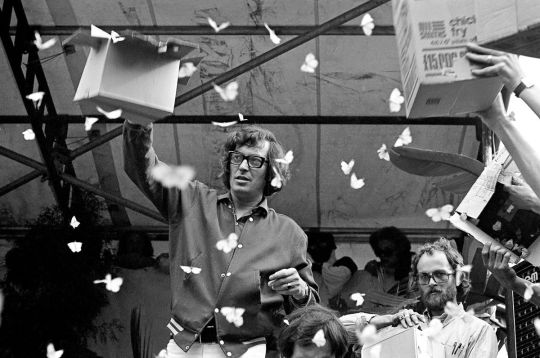

The Stones in the Park concert quickly became a tribute to Brian Jones, and at the start, Mick read two verses of Percy Bysshe Shelley’s Adonais, and as the band launched into “I’m Yours and I’m Hers” by Johnny Winters (one of Brian’s favourite songs), thousands of butterflies were released, though this was against park stipulation, as they were voracious Cabbage White butterflies, and many had died due to the boxes not being properly ventilated.
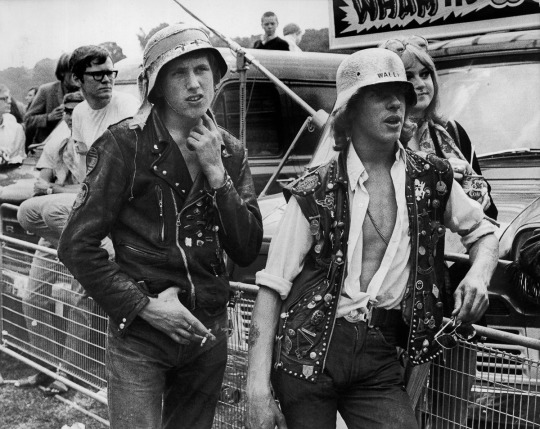
What’s important to this story about the concert at Hyde Park is that the London chapter of the Hell’s Angels was there providing security that day. It is also important to note that the Grateful Dead (who, incidentally, also had a member of the 27 Club in their line-up) had also hired the Hell’s Angels as security numerous times.
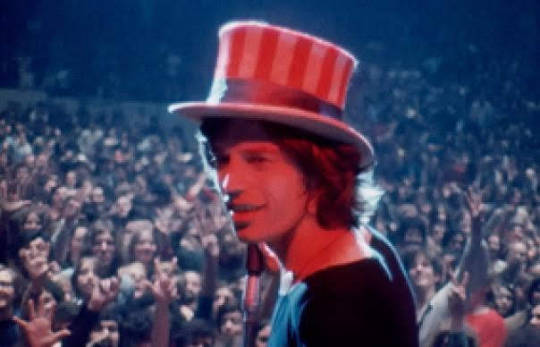
Several months later, the Stones had been having a pretty good run with their American tour, which was able to slightly mitigate some of the shady business practices Allen Klein had subjected them to, but throughout, fans and journalists kept complaining about high ticket prices. If you ask me though, those bitches were lucky. I’d rather be paying three to eight dollars (equivalent to $21.21 to $56.57 in 2019) as opposed to a minimum of $159 that tickets to a Rolling Stones concert now sell for. Not to mention, Woodstock had happened in August that year, and that was a big success, so in Mick Jagger’s 26-year-old, immature, unwise brain, that obviously meant that they should have another free concert like the one at Hyde Park. Really, in his mind, the peace and love movement was only just beginning, so what could go wrong?
As Murphy’s Law will tell you, “Anything that can go wrong will go wrong”
Oh, and go wrong it did.
The first major problem was that they couldn’t get a venue.
The concert was set for December 6, and their tour manager, Sam Cutler, struggled to get them a venue. He tried San Jose’s State University, but there had been a three-day festival recently, and the city wasn’t exactly in the mood for another batch of hippies storming the city so soon afterward, so that was out of bounds. He then tried gunning for San Francisco’s Golden Gate Park, but there was a football game between the Chicago Bears and the San Francisco 49-ers taking place in the same general location, which made use of the venue impractical. He then tried getting Sears Point Raceway on board, but disputes quickly arose over filming distribution rights and an up-front fee of $300,000.

Finally, just two days before the concert was set to take place, the Stones’ management managed to get a hold of Altamont Speedway (it helped that the owner, Dick Carter, apparently offered the venue for free).
As you can imagine, there was a whole shit-ton of problems that arose from that, and Rolling Stone magazine, in its piece on the tragedy, listed the following logistical problems:
“1) Promise a free concert by a popular rock group which rarely appears in this country. Announce the site only four days in advance.
2) Change the location 20 hours before the concert.
3) The new concert site should be as close as possible to a giant freeway.
4) Make sure the grounds are barren, treeless, desolate.
5) Don’t warn neighboring landowners that hundreds of thousands of people are expected. Be unaware of their out-front hostility toward long hair and rock music.
6) Provide one-sixtieth the required toilet facilities to insure that people will use nearby fields, the sides of cars, etc.
7) The stage should be located in an area likely to be completely surrounded by people and their vehicles.
8) Build the stage low enough to be easily hurdled. Don’t secure a clear area between stage and audience.
9) Provide an unreliable barely audible low fidelity sound system.
10) Ask the Hell’s Angels to act as ‘security’ guards.”
Most sane people would have quit while they were ahead, but this is the Rolling Stones we’re talking about. Between Brian Jones having five kids by the age of twenty-three, Mick Jagger allegedly sleeping with over 4,000 women (and don’t get me started on him and David Bowie), Keith Richards’ drug habits and his snorting his dad’s ashes, Bill Wyman dating a teenager while he was in his forties, and Charlie Watts punching Mick Jagger in the face, we are absolutely not dealing with the most sane bunch of individuals on the planet.
And let’s not forget that some idiot decided it’d be a great idea to pay the Hell’s Angels in $500 of beer (the equivalent of $3,535.43 in 2019).
Yeah, if you listened closely to the sounds of the earth in 1969, I can guarantee you, you probably would have heard a barely-cold-in-the-ground Brian Jones spinning in his grave over this stupidity (because he was acting as the band’s manager for a time in their early days before Andrew Oldham came on board).
Let’s also not forget that they hired a particularly notorious batch of Hell’s Angels from Oakland, California, whereas the Grateful Dead found their “security bikers” in Sacramento. Apparently, Grateful Dead manager Rock Scully even tried to warn the Stones about the “real” Hell’s Angels after seeing the footage from Hyde Park, but obviously, they didn’t take whatever warning he tried to give them to heart. The hippies in general had a romanticized image of the Hell’s Angels in their heads, seeing them as “outlaw brothers of the counterculture.”
No points for guessing how that worked out, but let’s continue regardless.
Set to perform that night were Santana, Jefferson Airplane, The Flying Burrito Brothers, Crosby, Stills, Nash, and Young, the Grateful Dead, and of course, the Rolling Stones.
They would all be performing on a stage that was just thirty-nine inches off the ground and surrounded on all sides by over 300,000 attendees. Apparently, this had been planned to create a more “intimate” experience.
From what I could tell, waivers were not involved.
For the sake of time, I can’t give you a minute-by-minute analysis of the event, but I can still provide a basic timeline of all that happened.

So, everything went relatively smoothly as Santana performed their set, but it was only downhill from there. As the day progressed, the crowd started fighting each other, and the “security” sure as hell didn’t help matters. At some point, someone knocked over one of the Angel’s motorcycles, which was likely an accident. However, the Angels were already pretty pissy, and plus, rule number one when it comes to the Angels is “Don’t mess with the motorcycles.” So, the Angels, already high thanks to someone spiking the beer with acid, started indiscriminately assaulting audience members they didn’t like with sawed-off pool cues and motorcycle chains, including a guy who was running around naked and someone else who was trying to take pictures of the stage. One woman who called in to a radio station the next day reported that she saw five fistfights, and the Angels were involved in every last one. She tried to intervene, but the people around her warned her not to, fearing for both their safety and hers.
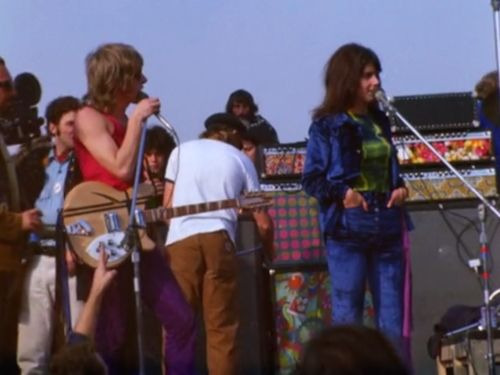
During Jefferson Airplane’s set, Marty Balin was knocked unconscious when he tried to intervene in a fight between the audience members and Hell’s Angels. When Paul Kantner grabbed a mic and sarcastically thanked the Angels, Bill Fritsch grabbed the mic from him and started arguing with him about it. In addition, Denise Jewkes, lead singer of Ace of Cups, was hit in the head with a beer bottle and suffered a skull fracture. Her husband, Noel, had to lead his six-month pregnant wife through the sea of people so she could get medical attention. The Stones later paid her medical expenses. By this point, news of what was going on out front was beginning to seep into the backstage areas and even back to the Stones at their hotel room, but most of the acts decided to press on regardless. However, after hearing about what happened to Marty from Michael Shrieve, the guys from the Grateful Dead decided to book it.
Yeah. Thanks a bunch, assholes.
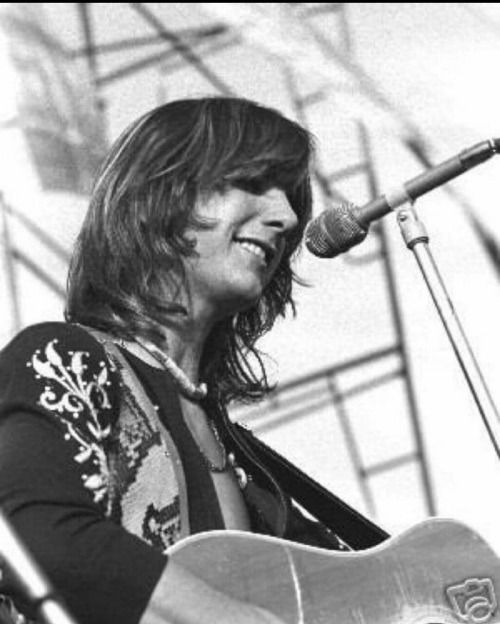
The crowd did calm down a bit for the Flying Burrito Brothers’ set, because really, who can say no to Gram Parsons? However, that calm was only temporary. When the Stones arrived by helicopter, it wasn’t even ten seconds before someone punched Mick Jagger in the face. Also, Bill Wyman missed the first helicopter out, so the Stones were already going to be late.
And then Mick Jagger decided he wanted to be all dramatic and shit, so the crowds were forced to wait until nightfall for the Stones’ set.
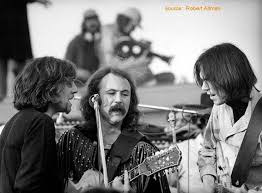
Meanwhile, during Crosby, Stills, Nash, and Young’s set, a “stoned out” Angel reportedly stabbed Stephen Stills in the leg whenever he stepped forward to sing, leaving trails of blood running down his leg.
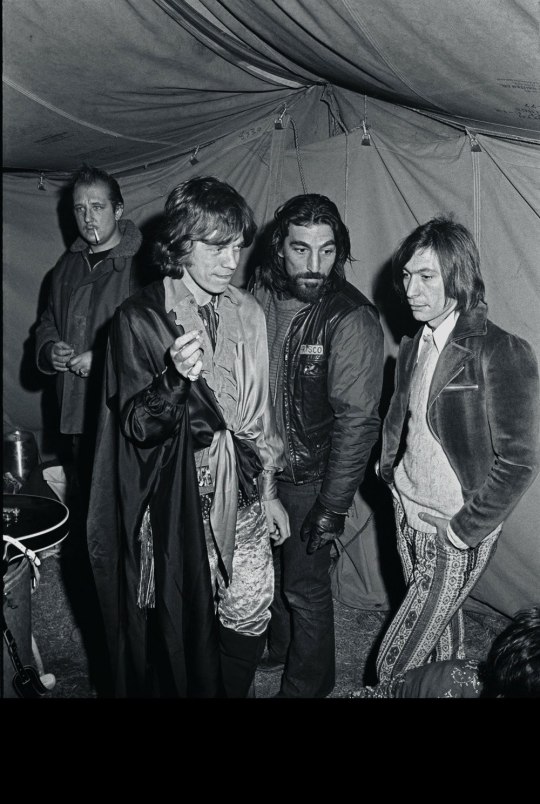
By the time the Stones were anywhere near ready to take the stage, things started to degenerate even further, to the point where the Angels (who already despised Mick’s scrawny, English arse) pretty much forced the Stones to go out on stage regardless of whether they were ready or not, just to prevent a full-scale riot.
It was in that moment Mick knew… he fucked up royally.

As Mick observed the constant fighting between the audience members and Hell’s Angels during the show as he sang “Sympathy for the Devil”, he desperately, defeatedly, pleaded for calm, his usual bravado completely absent for once in his adult life. However, it was clear that the Angels already weren’t going to listen to the flamboyant musician they clearly hated, and tensions had been simmering too long throughout the day, so Mick’s pleas for peace practically went completely unheard.
Mick Taylor later said, “The Hell’s Angels had a lot to do with it. The people that were working with us getting the concert together thought it would be a good idea to have them as a security force. But I got the impression that because they were a security force they were using it as an excuse. They’re just very, very violent people. I think we expected probably something like the Hell’s Angels that were our security force at Hyde Park, but of course they’re not the real Hell’s Angels, they’re completely phony. These guys in California are the real thing — they’re very violent. I had expected a nice sort of peaceful concert. I didn’t expect anything like that in San Francisco because they are so used to having nice things there. That’s where free concerts started, and I thought a society like San Francisco could have done much better. We were on the road when it was being organized, we weren’t involved at all. We would have liked to have been. Perhaps the only thing we needed security for was the Hell’s Angels. I really don’t know what caused it but it just depressed me because it could have been so beautiful that day”
(I feel so sorry for Mick Taylor. The kid was just twenty years old when he saw all this bullshit going down.)
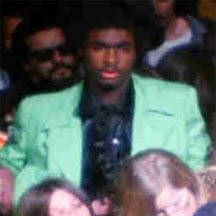
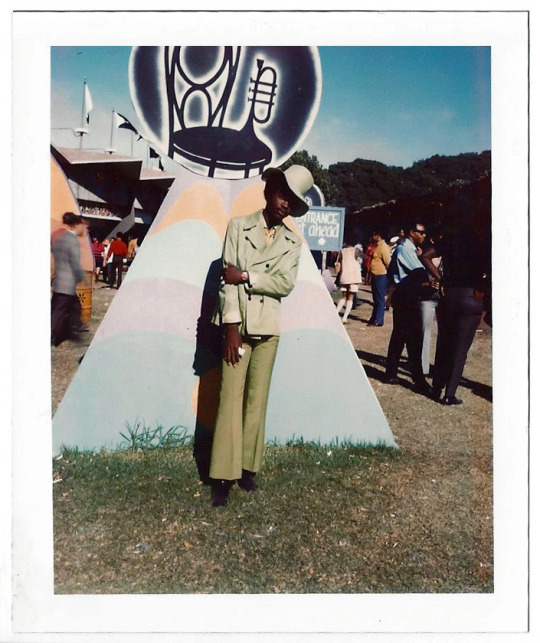
Now, what I’m going to do with this go-around, before I describe what happened next, is tell you a little bit about Meredith Hunter. He was just eighteen when he went to Altamont with his girlfriend, Patti Bredehoft. The only reason he had a gun that day, according to his family, was for self-protection, given that he was basically a young black man with a white girlfriend in a sea of white people, at a time and place where racism was still very much prevalent. Allegedly, the gun didn’t even have any bullets in it; it would just be a last resort to deter anyone giving him trouble. Like most 18-year-olds, he was also a bit naive, and though his girlfriend wanted to leave, he convinced her to stay for the Rolling Stones’ set. At one point, he was already set upon by Hell’s Angels, but that time, it was only a scuffle. What is known is that he was high on methamphetamines, but what isn’t known for sure is his general demeanour. Some said he had a crazy look in his eye, while others said that he seemed calm, though he was upset at the violence.
And then, all hell broke loose.
youtube
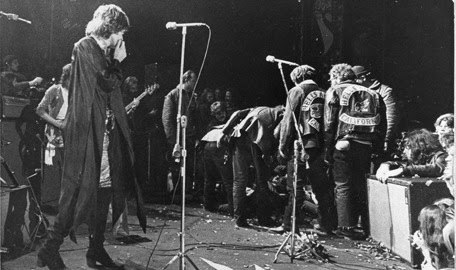
As “Under My Thumb” was ending, cameras found an opening into the crowd, into which stumbled Meredith Hunter. He grabbed his gun, a .22 calibre revolver, which was visible to cameras against Patti’s dress. When Alan Passaro saw this, he immediately assumed that Hunter was trying to shoot somebody, and started stabbing him (this was, again, in plain view of a bunch of cameras). Subsequently, he was repeatedly kicked in the head, trying to tell his attackers that he wasn’t trying to kill anybody. However, the Angels were convinced that he was attempting to shoot somebody, and that’s essentially what the narrative became- that a crazed black kid high on meth tried to shoot Mick or one of the other Rolling Stones (which, believe me, I’d be salty about even if I hadn’t read a Rolling Stone article about him).
It was little Mick Taylor who managed to keep things rolling (a bit) by suggesting they play “Brown Sugar”, which had only been recorded the previous Tuesday.
Somehow, after the vicious beating he’d suffered, Meredith was still alive, and a doctor at the scene looked at him and recommended that he get immediate medical attention, or else he’d die. However, the only helicopter at the scene was reserved for the Rolling Stones, and the pilot made it clear, in no uncertain terms, that no one else was allowed on board. Hunter ended up dying of his injuries while they waited for emergency responders.
I don’t quite know how well the situation was explained, but still, dick move on the part of the helicopter pilots.
In addition to Hunter, three other people died, one after falling into a fast-moving irrigation duct while tripping on LSD, and two others were killed in their sleeping bags during a hit-and-run accident. There were also four reported births, one of which occurred during Jefferson Airplane’s set.
The day after the concert, the Stones flew back to London, as the news slowly disseminated throughout the world.
youtube
In 1971, a documentary about the tragedy, Gimme Shelter, was released to the public. However, in the years since, many have argued that is meant to excuse the Stones’ actions and is an apologist piece of media. Still, the footage itself does show a chilling account of what happened that day, if you can ignore that overall narrative (though you really shoudn’t ignore that).
Alan Passaro was later charged with Meredith’s murder, but was acquitted by an all-white jury, who likely either excused the crime due to racism, or just didn’t have the full story.
After Altamont, just about everybody turned on each other. The audience members, many of whom undoubtedly still live with the scars of that fateful night blamed the Hell’s Angels, whereas the Angels laid some of the blame on the audience members, and most of it on the people who hired them, whilst the Stones said they’d never work with the Hell’s Angels again (which, allegedly, almost resulted in some of them trying to assassinate Mick Jagger).
In my honest, humble, not-so-professional opinion, I say the blame should be laid with the Stones’ management, Mick Jagger, the Grateful Dead, and the Hell’s Angels. The concert should have been planned over a matter of months instead of weeks, held in a proper venue, and above all else, not had fucking Hell’s Angels as security guards.
While the Grateful Dead came out of it rather unscathed (mostly because they didn’t play), it’s been said that the Stones lost quite a bit of their edge. It’s easy to say that they grew up a lot because of this event, becoming a lot humbler, and a lot less greedy and risky as a direct result of this. It’s even to a point where people haven’t liked much of what they’ve put out since the 1980’s. Santana and Crosby, Stills, Nash, and Young declined to have their performances shown in Gimme Shelter, and have since spoken very little about the event. Meanwhile, Alan Passaro drowned in 1985, though the circumstances of his death are suspicious, to say the least. Meanwhile, Meredith Hunter’s family still deals with the trauma of his death, and aside from a $10,000 ($70,708.59) settlement, the Stones never even approached the family to offer their condolences, or even a half-assed explanation (I don’t recommend the latter approach). The Hell’s Angels also had their reputations as dangerous outsiders cemented by this event, given that they’d caused at least 75-90% of the violence that took place that day.
Keith Richards has maintained his “fuck-all” attitude about this through the years, even writing in his 2010 autobiography “In actual fact, if it hadn’t been for the murder, we’d have thought it a very smooth gig by the skin of its fucking teeth.”
There is a reason that many of the dreams of the 60′s died at Altamont, and all the evidence you really need is the footage that was shot that night and the words of the people who saw the fiasco first hand.
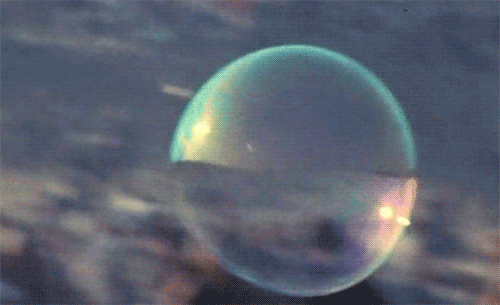
Sources: https://www.rollingstone.com/music/music-features/remembering-meredith-hunter-the-fan-killed-at-altamont-630260/ https://www.rollingstone.com/music/music-news/the-rolling-stones-disaster-at-altamont-let-it-bleed-71299/ https://www.forbes.com/sites/davidchiu/2019/12/03/altamont-at-50-the-disastrous-concert-that-brought-the-60s-to-a-crashing-halt/#535871c31941 https://www.newyorker.com/culture/cultural-comment/the-chaos-of-altamont-and-the-murder-of-meredith-hunter https://www.history.com/this-day-in-history/the-altamont-festival-brings-the-1960s-to-a-violent-end https://datebook.sfchronicle.com/music/altamont-wasnt-the-end-of-the-60s-it-was-the-start-of-rock-n-roll-disasters https://worldhistoryproject.org/1969/12/6/altamont-free-concert Altamont by Joel Selvin Life by Keith Richards https://allthatsinteresting.com/altamont-speedway-free-concert https://www.washingtonpost.com/graphics/2019/lifestyle/altamont-rolling-stones-50th-anniversary/ https://en.wikipedia.org/wiki/Altamont_Free_Concert https://en.wikipedia.org/wiki/Death_of_Meredith_Hunter http://timeisonourside.com/chron1969.html https://www.thevintagenews.com/2018/02/01/altamont-free-concert-in-1969/ https://www.ranker.com/list/altamont-free-concert-facts/jen-jeffers http://www.findingdulcinea.com/news/on-this-day/On-This-Day–Deaths-at-Rolling-Stones–Altamont-Concert-Shocks-the-Nation.html https://www.robertchristgau.com/xg/bk-aow/altamont.php https://westegg.com/inflation/ https://www.youtube.com/watch?v=JUlyVSfhgaM https://www.setlist.fm/setlist/the-rolling-stones/1969/altamont-speedway-tracy-ca-43d6fbb3.html https://slate.com/culture/2018/07/just-a-shot-away-a-history-of-altamont-by-saul-austerlitz-reviewed.html
#mick jagger#keith richards#brian jones#charlie watts#bill wyman#mick taylor#the rolling stones#jefferson airplane#santana#flying burrito brothers#the grateful dead#cw: drugs#cw: death#cw: racism#cw: murder#cw: assault#cw: violence#this concert was such a mess
2 notes
·
View notes
Text
Rock and Roll Storytime #8: Motherf***ing Altamont (Otherwise Known as the Worst Mistake the Rolling Stones Ever Made)

Let’s face it, 1969 was a pretty crazy year no matter where you stand. On one hand, there were the moon landings, Woodstock, and general protesting against the Vietnam War (much to the chagrin of the Establishment), but on the other hand, there was the Chappaquiddick incident, the death of Brian Jones, and the Beatles starting to head full-steam down the path that led to their breakup in April 1970.
And then, there was Altamont, what has otherwise been labeled as the darkest day in Rock and Roll History.
This one’s going to be frustrating (and as an aside, I’m actually quite glad that Brian Jones missed out on this one, and likely would have even if he hadn’t drowned, by virtue of getting fired from the Rolling Stones in June 1969).
Let me start off by positing one simple question: WHICH DUMBASS CAME UP WITH THE BRIGHT IDEA OF HIRING THE HELL’S ANGELS AS SECURITY?!
Okay, I guess I’d better start earlier than that, even, with some of the lead-in. The Rolling Stones had last performed in the concert circuit in 1967, and by June 1969, they wanted to get back on the road. One problem: their guitarist, Brian Jones, was unable to get a work visa due to having racked up two drug convictions in the meantime (at least one of which was definitely based on planted evidence). Even then, Brian, for reasons known mostly to him and only speculated upon by me, had stopped contributing to the Stones’ music, if he even showed up to recording sessions at all. Mick Jagger, himself, said that Brian’s last major contribution to a Rolling Stones song was the hauntingly beautiful slide guitar on the melancholic “No Expectations”.
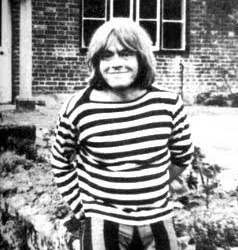
It was apparently their road manager, Ian Stewart, who brought up the idea of letting Brain go from the band. Bill and Charlie had absolutely no say in the decision, but ultimately, on June 8, 1969, Mick and Keith went to Brian’s residence, Cotchford Farm, to tell him he was being fired, with Charlie tagging along to make sure a fight didn’t break out. However, by most accounts, Brian had been expecting this would happen, and agreed to leave the band. Mick and Keith left the press statement up to Brian, and possibly to save face, he decided to make it look like he’d left the band on his own accord.
The statement read: “I no longer see eye to eye with the others over the discs we are cutting. We no longer communicate musically. The Stones’ music is not to my taste any more. The work of Mick and Keith has progressed at a tangent, at least to my way of thinking. I have a desire to play my own brand of music rather than that of others, no matter how much I appreciate their musical concepts. We had a friendly meeting and agreed that an amicable termination, temporary or permanent, was the only answer. The only solution was to go our separate ways, but we shall still remain friends. I love those fellows.”
How much of this statement was true is up to personal conjecture. In either case, Brian was replaced by 20-year-old Mick Taylor, who’d previously played with John Mayall’s Bluesbreakers. In a press conference on June 13, the band announced Taylor’s arrival (having two Micks in the band gets so confusing), as well a free concert in Hyde Park on July 5 to introduce the youngest member of the band.
Then, just two days before the concert, Brian drowned in his backyard swimming pool at the age of twenty-seven. His death was ruled as misadventure (which personal research seems to back up), but theories persist to this day that he was, instead, murdered.
In the blink of an eye, the Hyde Park gig went from being an introduction to Mick Taylor to being a tribute to Brian Jones. In honor of Brian, the concert began with Mick reading two verses from Percy Bysshe Shelley’s “Adonais,” and as the band began playing “I’m Yours and I’m Hers” (one of Brian’s favorite songs), 2,500 cabbage white butterflies were released (against stipulation), though, by this point, many had died in the July heat, due to the boxes not being properly ventilated. Even if, on a technical level, it wasn’t one of the Stones’ best shows, it still showed the world at large that the Stones were back (baby).
youtube
So, what does all this have to do with Altamont? Well, providing security that day was the London chapter of the Hell’s Angels. Apparently, it was Rock Scully’s idea, after he’d hired the Angels as security on multiple occasions while managing the Grateful Dead.
Thing is, the London chapter was a lot calmer when compared with the infamous Californian branch of the Hell’s Angels.
So yeah, there’s problem #2...
That summer, a little concert called Woodstock took place, which ended up epitomizing the peace and love movement. But if that was the high, then Altamont was what brought that idealism to a screeching halt.
Problem #3: the concert was based entirely on the notion that the Stones could hold a free concert as a sort of West Coast Woodstock.
After all, even journalists throughout that tour had been complaining about high ticket prices (even though $3-$8 seems to me a steal considering they’re going in the triple digits nowadays...). What could go wrong?
Those of you familiar with Murphy’s Law may be able to see where I’m going with all this.
Problem #4: their tour manager, Sam Cutler, just couldn’t get a venue.
He tried to score them a gig in San Fransisco, but there was a football game taking place, San Jose wouldn’t have another concert so soon after the last one, and Sears Point Raceway asked for a $100,000 fee as well as distribution rights to the concert footage (the entire tour had been filmed by a crew including the Maysles brothers and future Star Wars director George Lucas). So, a mere forty-eight hours before the concert began, the Stones finally settled on Altamont Speedway.
Needless to say, anyone who’s ever been to a concert or organized any large scale events would be able to tell you that choosing the venue at the last minute is NEVER a good idea. This is also evidenced by the fact that the venue was covered in trash and lacked basic amenities such as water and toilets, but hey, the owner offered it for free, so why not?
I swear, the level of incompetence shown by multiple parties throughout these proceedings is on another level (and I read the Darwin Awards...)
Also, as a result of the ASTRONOMICALLY poor planning, the stage was only an inch off the ground, and since there were only two days before the concert, there was no time to make the stage safe, so already, anyone playing at Altamont the day of December 6 were putting themselves at risk (I don’t know if waivers were signed either). Not to mention the fact that there would be absolutely no barriers between the performers and the reported 300,000 attendees.
So, that should cover problems #6 and #7, but in my personal opinion, the coup de grace of all these fuck-ups was the decision to hire the Californian Hell’s Angels as security.
Again, as I said, the Stones did have the London branch of the Hell’s Angels at the Stones in the Park concert, but anyone who knows anything worth a damn about the Californian Hell’s Angels would know that it’s a whole different ballpark dealing with them. From what I’ve heard, the hippies had an unrealistically idealized version of them in their heads, and Cutler apparently even tried warning the Stones about the “real” Hell’s Angels. Even then, the Hell’s Angels were offered $500 worth of beer to basically just sit on the side of the stage and make sure no one got too close.
If you’ll excuse me, I need to go call the organizers fucking idiots in a minimum of seven languages. ... Okay, I’m good. Still pissed, but I’m fine.
In either case, also not helping matters was that at least 95% of the audience were high on one substance or another, because, let’s face it, this was the hippie movement. And according to Rolling Stone magazine, the organizers also didn’t warn neighboring landowners of the hippies descending on the scene, set the whole thing in a desolate, treeless, wasteland (and still there was no clear barrier between the performers and the audience), the sound system was shit, and in general, the stage was completely surrounded by people and their cars.
I don’t know about you, but I’m already smelling a disaster waiting to happen.
The concert was to feature Santana, Jefferson Airplane, The Flying Burrito Brothers, Crosby, Stills, Nash, & Young, The Grateful Dead, and of course, the Rolling Stones.
Things started out smoothly with Santana’s set, but only deteriorated from there, as the Hell’s Angels got increasingly drunk. Throughout the day, the Angels would attack anyone who was being problematic (sometimes with sawed-off pool cues and motorcycle chains), although their victims include a guy running around naked and another who was trying to take pictures of the stage. Things only got worse after someone (possibly accidentally) knocked over one of the Angels’ motorcycles. During Jefferson Airplane’s set, Marty Balin jumped into the crowd to stop a fight and was knocked unconscious, and when Paul Kantner sarcastically thanked the Angels, one, Bill Fritsch, took up a microphone and argued with him about it. One woman called a radio show the next day to say that she saw several fistfights break out, and every single one of them involved the Hell’s Angels. When she tried to speak up about it, other people around her told her to keep quiet out of fear of provoking them. Denise Jewkes, lead singer of Ace of Cups and who was SIX MONTHS PREGNANT, got hit in the head by a beer bottle, causing a skull fracture (the Stones later paid for her medical expenses). Stephen Stills was reportedly stabbed in the leg several times by a “stoned-out” Hell’s Angel. When the Rolling Stones flew in, Mick was punched in the face almost the second he got off the helicopter. Things got so bad, that the Grateful Dead basically just said “Fuck it” and got the hell out of dodge.
Apparently, the only time the crowds calmed down, even a little, was when the Flying Burrito Brothers took the stage.
It was dark when the Rolling Stones finally took the stage (partly because Bill Wyman missed the first helicopter), and by then, things were only deteriorating further (if such a thing is even possible). Fighting between audience member and Hell’s Angel alike kept breaking out, to the point where Mick stopped the show in a vain attempt to get the crowd to calm down.
All I can say is, “Too little, too late.”
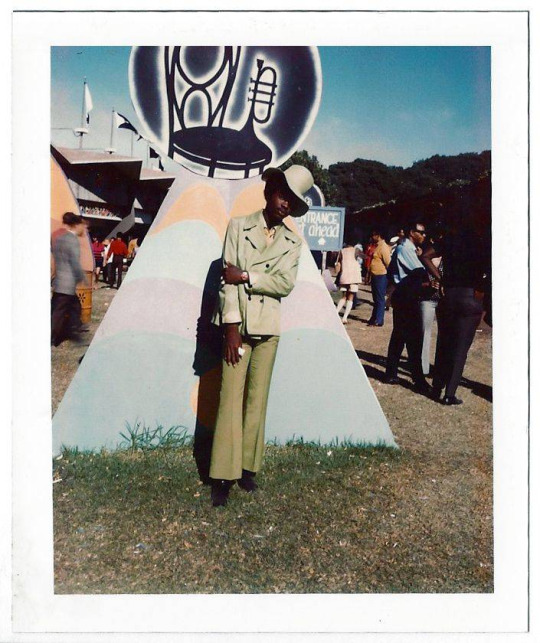
And still, as the Stones tried to keep performing, the situation only got worse. While Mick was singing “Under My Thumb”, yet another melee broke out, and in the chaos, 18-year-old Meredith Hunter, who had come with his girlfriend Patti Bredehoft and who happened to be high on meth at this very moment, was stabbed to death by 21-year-old Alan Passaro, after apparently brandishing a .22 caliber revolver in the direction of the stage. Passaro was later acquitted of all charges, which I think was a horrible mistake. It’s impossible to know for certain whether Hunter had been trying to defend himself or if he actually intended to shoot Mick Jagger, but what is known is that Hunter’s murder was captured on camera. You can watch the footage, but I must say, it makes for grisly viewing:
youtube
People who were at the scene have since reported that Hunter was in urgent need of medical attention. However, the helicopter pilots who were there refused to take off for any one but the Rolling Stones. EVEN THOUGH THIS WAS CLEARLY A LIFE OR DEATH SITUATION.
Excuse me, I need to take another break to scream to the heavens about why this was allowed....
Needless to say, Hunter died while waiting for an ambulance to come. In addition, two other people were killed in a hit-and-run accident, whilst another drowned under the influence of LSD. Also, four babies were born.
The next day, the Stones were on a plane back to London.
In the years since Hunter’s death, no one in either the Rolling Stones, the Grateful Dead, or the Hell’s Angels have taken responsibility for what happened. The Hell’s Angels, the organizers, and the crowds blamed each other for what happened, and the Stones have never really spoken up about it. They’ve never even had the decency of apologizing to Meredith Hunter’s family.
If you ask me though, I’d say that the fault lies entirely with everyone who organized this whole mess. Somehow, everyone involved was naive and/or stupid enough to try and organize an entire concert in just a few weeks as opposed to months, and the decision to hire the Hell’s Angels as security only exacerbated the ineptitude of everyone involved.
Let’s face it, none of the organizers were innocent, and no one in the crowd escaped without losing their collective innocence. There’s a damn good reason that this is considered the death knell for the hippie movement, and it’s all in the footage taken that night.

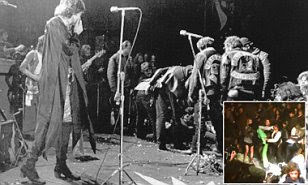
Sources/Further Reading: https://www.rollingstone.com/music/music-features/remembering-meredith-hunter-the-fan-killed-at-altamont-630260/ https://www.ranker.com/list/altamont-free-concert-facts/jen-jeffers https://allthatsinteresting.com/altamont-speedway-free-concert https://www.newyorker.com/culture/cultural-comment/the-chaos-of-altamont-and-the-murder-of-meredith-hunter Up and Down with the Rolling Stones by Tony Sanchez Life by Keith Richards Altamont by Joel Selvin https://www.history.com/this-day-in-history/the-altamont-festival-brings-the-1960s-to-a-violent-end https://www.thevintagenews.com/2018/02/01/altamont-free-concert-in-1969/ https://www.thevintagenews.com/2018/08/21/altamont-festival/ https://www.villagevoice.com/2018/07/23/altamont-the-rolling-stones-and-the-death-of-the-sixties-dream/ https://en.wikipedia.org/wiki/Altamont_Free_Concert https://en.wikipedia.org/wiki/Death_of_Meredith_Hunter https://en.wikipedia.org/wiki/The_Rolling_Stones_American_Tour_1969 https://en.wikipedia.org/wiki/The_Stones_in_the_Park https://web.archive.org/web/20161116164203/https://theravenreport.com/2016/10/31/rock-and-rolls-worst-day-this-1969-concert-ended-in-death/ https://www.rollingstone.com/music/music-news/the-rolling-stones-disaster-at-altamont-let-it-bleed-71299/ http://timeisonourside.com/chron1969.html https://www.youtube.com/watch?v=JUlyVSfhgaM
#cw: death#cw: murder#the rolling stones#mick jagger#keith richards#brian jones#charlie watts#bill wyman#mick taylor#the grateful dead#santana#jefferson airplane#crosby stills nash and young#flying burrito brothers#this whole thing pisses me off so much#even more so than with how the stones have treated brian in both life and death#rock and roll
2 notes
·
View notes
Photo
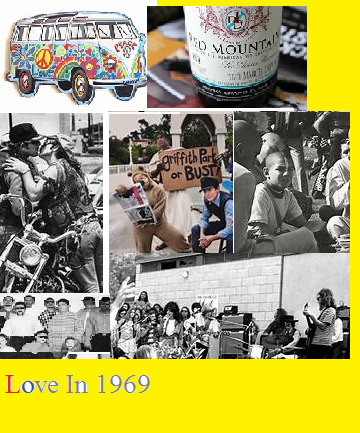
Love In Hell
By Stephen Jay Morris
Monday, February 25, 2019
©Scientific Morality
It was the Summer of ‘69 and I was all of 15 years old. Life, at that point, had become a major exploration trip. I’ve laid out the details of that summer in my manuscript entitled, “Hidden in the Rotunda.” This article focuses on one Monday, that of July 28, 1969.
I went to my first Love In at Griffith Park, which took place at the popular “Merry-Go-Round” area, in 1969. During the Summer of Love, back in 1967, there had been a Love In at this exact location. By that time, the term “Love In” was laughably passé. About 500 people had shown up, clad in their head shop-slash-thrift shop, chic clothing, posing for the news media. The gathering was comprised mostly of art fart types who hadn’t had enough time to grow their hair long. But some of them had long sideburns and the females were sporting Carnaby Street fashions on their svelte, white bodies. Groovy, baby!
A couple of years later—1969—the unwashed masses amassed in this hilly, city park. Not only did the so-called Hippies show up, but there were also Bikers, Chicano gang bangers, homeless people, Krishna devotees, drum circle freaks, Anti War activists, Black Panthers, and New Left activists. It was an outdoor party and it was freaking me out, man! Oh, yes—the pigs (cops) showed up in full riot dress.
I don’t recall how I initially found out about this event. Maybe it was through an ad in the L.A. Free Press, or a friend had told me about it. In any case, I went. It was summer vacation and what better way to spend it than by going to my very first Love In!? I asked my friend, Philip, if he wanted to go, but his parents said “No!” My parents? I just told my mom I was going to visit my friend and I’d be back in time for dinner. What I didn’t tell her was that I’d be with a few thousand friends! My dad, well he couldn’t give a rat’s ass about what I did on vacation. Matter of fact, the longer I stayed out of the house, the happier he was; shit breath didn’t love me at all. Only my mom cared.
It was mild for a summer day; the temperature topped out at 71 degrees. One thing I hated about summer in L.A. was the humidity. It was typically cold in the morning, so you’d end up having to carry your jacket around almost all day. I remember wearing a work shirt that once belonged to my grandfather. In knew my dad resented me for wearing it, but he never said anything. Go figure.
I left my house on Martel Avenue. Looking north to the Hollywood Hills, there was the familiar, brown haze of smog. In the wintertime and early spring, and sometimes in autumn, the view of the hills was crystal clear. Once, a few years earlier, I saw snowcaps on those hills, just after a rainstorm.
I walked eastward down Beverly Boulevard toward La Brea. I was planning to take the public bus to the event, using my student discount card. I wore my Levi’s jeans, a black Tee shirt, and black deck shoes. I’d put on boxer shorts as well, although a lot of “hip kids” didn’t wear underwear. I had my grandfathers work shirt on over my Tee shirt.
Now on weekends, buses kept different schedules than they did on weekdays. They came just once every hour and stopped running at midnight. By then, the oil companies had ruined public transportation in Los Angeles. I waited and waited on the northeast corner of Beverly and La Brea. Four gas stations flanked the intersection: Texaco, Chevron, Exxon, and Gulf. L.A. was indeed a “car town.”
Hitch hiking was the standard “hip” mode of transportation. It was viewed as an expression of collective sharing among your brothers and sisters; just like sharing a jug of wine or a joint. Taken to the extreme, there was the sharing of your boyfriend or girlfriend in the name of “Free Love.” As a rule, I didn’t hitch hike much. Middle-aged perverts who wanted to suck my cock would often pick me up. On the other hand, I didn’t want to wait another hour for a bus, so I stuck out my thumb and hoped for somebody who was heading for the same destination as I was.
Ten minutes later, a 1949 VW Beetle ambled up the street toward me, a trail of smoke behind it. At the time, a lot of young people painted their VW bugs with colorful floral designs and symbols, such as the Peace sign. Well, this little car was a real wreck! It looked like it had been entered into and ejected from a demolition derby. One taillight was cracked, a door was taped up, and the paint was peeling with age. The body was covered in dents.
But, you know what they say: “Beggars can’t be choosers!”
The door opened and the driver asked, “Griffith Park Love In?”
I said, “Yep!”
He jubilantly replied, “Get in!”
A passenger closed the door behind me. The driver looked like a college professor from the 80’s. He was a white guy in his 40’s with shaggy, curly hair and an unshaven face; his specs sat halfway down his nose. The radio was on; a vintage A.M. model with one speaker. It was tuned in to some Top 40s station; a teenybopper song was playing. I think it was “Baby I Love You.” When it ended, the DJ announced loudly, “That was Andy Kim! Going up the charts like a shooting star! Now the news! Headlines: Nixon says 25,000 troops will be withdrawn out of Vietnam in a couple of days!”
What I hated about VW Beetles was that noisy, sputtering engine and the smell of gasoline. I prayed we’d get to our destination soon, before I got asphyxiated! Thank Buddha, somebody lit up a doobie, which effectively covered up the gas odor. Hey, I would have been happy if somebody had simply burned some incense!
Someone from the back seat addressed the driver, “Hey, Dean! Are you going to that Woodstock Arts and Crafts festival?”
He blissfully replied, “Hell, yeah. I’m going!”
I asked, “What’s Woodstock?”
He laughed and answered, “Only the biggest concert in the history of humanity! It is going to be bigger than the Monterey Pop Festival two years ago. I heard the Beatles are showing up!”
Somebody said from the back seat, “I heard the Stones and Dylan are coming, too!”
I asked, “Where is this going to take place?”
“Upstate New York!”
I replied, “Oh.” I thought to myself, ‘They’ll be lucky to get Joni Mitchell to play at an arts and craft festival. Whenever I think of an arts and craft festival, I think of the Renaissance Fair. My dad took the family to that fair once and it reminded me of an outdoor mental institution. No thanks!’
Driving south on Los Feliz Boulevard reminded one of how poor they are. There were these giant mansions built in the 1930’s, worth millions upon millions of dollars! Even the Art Deco apartment buildings looked luxurious.
Finally, upon arriving at the Mulholland Memorial Fountain, I knew we’d arrived at the entrance to Griffith Park. Just a right turn on Crystal Springs Drive and then north to the park.
Today, though, was different. For the first time since I’d driven there with my parents, there was a traffic jam. Lines upon lines of vehicles, of all different shapes and kinds, were backed up to Los Feliz. Those inside were mostly collage-aged kids, smoking grass and banging on tambourines. Crystal Spring Drive was a two-lane road next to the side of a hill, a distance of about a mile and a half to our destination, the Merry-Go-Round. At a grueling 10 miles an hour, it took us about 25 minutes to get there! It was 11:35 a.m.
Only three bands were scheduled to play the Love In. They were “Ace of Cups” (stupid name), “Sons of Chaplin,” and the “Jefferson Airplane.” In December that year, I would see The Airplane perform at Altamont Speedway’s tragically-iconic, free concert in Northern California.
Behind the Merry-Go-Round, there was a small meadow in which hundreds, if not thousands of people, had gathered. An area had been set aside where the band would play; not an elevated stage or platform, just open, flat ground. This area was on an incline, so mostly people who located themselves far from it could see the bands. All of this was set up behind the public bathroom building.
I walked alone among the throngs of smelly Baby Boomers. There were peddlers selling everything—and I mean everything! I came across one member of the Black Panther Party selling his party’s tabloid, “The Black Panther.” I’m glad for that; all of the misinformation I’d been told was dispelled later that night.
Cops were strolling among the crowd. There were some kids walking around butt naked. This was supposed to be for making a political statement. If you’d asked me, I’d have said it was just good old fashioned expositionism! If you’d seen their bodies, you’d have hoped they were arrested! A cop would yell to one nude dude, “Hey! Cover up or you will get busted for indecent exposure!” The lawbreaker quickly tied a shirt around his waist. As soon as the fuzz left the area, he got naked again. It was the same thing with pot, which was still illegal in those days. Some cops would tell a pot smoker, “Put that stuff away or I will have to run you in!” Overall, the cops wanted to avoid any rioting.
The Chicano gangs were drunk on wine and barbiturates, or “Reds.” The Bikers stood by their Harley Davidsons while they got drunk on beer. The more they drank, the more pugnacious they got. Fights broke out everywhere. Ultimately, the event was more like a “hate in” than a Love In. What I could never understand was why Bikers attended every Love In or Antiwar protest if they hated Hippies so much! I suppose it was for the dope and the chicks.
The Hippies were just toking on weed and passing around gallon bottles of Red Mountain wine. Sharing like this was a sure way of getting Hepatitis C. I avoided the ritual as much as possible. The Hippie chicks had this proclivity of dancing by themselves. They looked like blow up dolls in the wind. Alas, everybody was compelled to express themselves in those days. It was a great argument for Fascism.
Oh, there was music…sort of…kind of. Two bands were playing your generic twelve-bar blues. Then came the Airplane. But, every song they attempted to play was stopped in the middle. Why? Because the sound system sucked shit!
I got bored and left. As I looked at the crowd for the last time, I thought, ‘This is not going to last. Most of these kids will get married and have kids financed by their careers. By the 1980’s, they will become Republicans.’ I wish I’d written that down. Who is going to believe I ever had those thoughts? No one.
I took a bus home, had dinner, and went into my room. I read “The Black Panther.”
I’ll say this, it was the most interesting Monday I’d ever had.
#60's music#60s#baby boomer generation#poets on tumblr#@anarchism#Poetry Slam#hippie#stephenjaymorris#jefferson airplane
2 notes
·
View notes
Text

Album Review: Various Artists - Summer of Soul (…Or, When The Revolution Could Not Be Televised) Original Motion Picture Soundtrack
Welcome to Soulsville, U.S.A., aka Harlem, Manhattan, New York City, scene of the 1969 Harlem Cultural Festival, aka the Black Woodstock.
Finally out in the wake of the 2021 film that made it possible, Summer of Soul (…Or, When The Revolution Could Not Be Televised) Original Motion Picture Soundtrack is a trip back in time to a festival that was essentially lost to history until Questlove got his hands on the video archives and made his directorial debut.
Now, here comes the audio; 17 tracks and 80-plus minutes minutes of aural documentation replete with stage announcements, perhaps as a nod to the unofficial Black Woodstock moniker, and the Chambers Brothers setting the stage with “Uptown.”
The sound quality is flat, to be expected from half-century-old tapes that moldered in storage all those decades. The sounds; however, are extraordinary, the crossroads of B.B. King’s blues (“Why I Sing the Blues”); the 5th Dimension’s pop (“Aquarius/Let the Sunshine In”); the gospel of Mahalia Jackson and the Staple Singers; the jazz of Mongo Santamaria‘s “Watermelon Man;” Sly & the Family Stone’s psychedelia; and a touch of Motown R&B and soul courtesy of David Ruffin’s “My Girl” and Gladys Knight and the Pips’ “I Heard it Through the Grapevine.”
The artists’ messages are as diverse as the artists themselves, from Ray Barretto’s plea that people come “Together” before it’s too goddam late to Nina Simone’s query “Are You Ready” to kill if necessary. Is your mind ready?
Incredibly, it all holds together via the sheer strength of music and community. The sound is an issue; however, the fact the recordings survived in listenable condition is a miracle worth experiencing.
Grade card: Various Artists - Summer of Soul (…Or, When The Revolution Could Not Be Televised) Original Motion Picture Soundtrack - B
2/1/22
#summer of soul#2022 albums#questlove#the roots#b.b. king#mahalia jackson#the staple singers#the chambers brothers#sly & the family stone#nina simone#the 5th dimension#david ruffin#the temptations#gladys knight and the pips#marvin gaye#mongo santamaria#ray barretto#harlem cultural festival#black woodstock
8 notes
·
View notes
Text
End of an era: harness racing comes to a close in Saint John
The last scheduled harness racing card at Saint John’s Exhibition Park on Sunday afternoon was a bittersweet homecoming for many spectators watching.
“I grew up right next door to the track, and have a lot of memories of living by the track and working at the track,” said John Kelley. “A lot of friends around the track. Good reasons to be here I guess.”
The board of directors at Exhibition Park announced its lease with Horse Racing New Brunswick would expire Dec. 31, 2022, with no plans of negotiating a new agreement.
“It’s been rumoured for close for 20 years, every year that it might shut down,” said Scott Bernard at Sunday’s event. “So I think it’s almost like confirmation now.”
Attempts to contact Horse Racing New Brunswick weren’t successful.
A written statement from the board of directors at Exhibition Park said the decision would allow it to “explore opportunities that may have the potential to make better use of the lands and facilities thus providing a greater service to the greater Saint John community.”
Sunday’s event, which was delayed a day due to rain, was a mix of nostalgia and reflection amidst the crowd.
Stephen Mahar, a former driver known for having won over 5,000 races, including his first win in 1969 at Exhibition Park, described Sunday’s mood as "sombre" with the loss of a close-knit community circuit.
“I’ve been out of the business really for the last year or so but I like to come down and have a coffee with the guys in the mornings and stuff like that,” said Mahar. “I hate to see it completely close.”
Anne Parker’s parents worked at the Exhibition Park race track when she was growing up. Parker remembered when harness racing was the hottest ticket in town, especially in the 1970s and 1980s.
“If they could only go back and look at the way this place was and what was brought into Saint John from the race track,” said Parker.
Horse Racing New Brunswick has indicated its intention to move the organization from Saint John to Woodstock.
“People just stopped coming (to Saint John) because they only had maybe four horses in a race or five,” said Nancy Martin, who’s been coming to the Saint John racetrack for decades. “At one time they used to have 10 horses in a race, which was very interesting.”
Several spectators at Sunday’s event pointed to Prince Edward Island’s harness racing industry as an example of how it could’ve found mainland success.
The Atlantic Lottery Corporation operates PEI’s Red Shores Race Track and Casino. The crown corporation looked at the possibility of locating a racino at Exhibition Park in Saint John, later claiming that no viable business case could be found.
Prince Edward Island Premier Dennis King said his province’s harness racing industry was “alive and well,” in an interview with CTV last week.
“And it’s really becoming one of our fast growing industries in PEI,” said Kings. “I’ve tried to convince my counterparts in Nova Scotia and New Brunswick to treat it like an industry. Any industry in its infant stages needs investment. Our province has done that.”
from CTV News - Atlantic https://ift.tt/gyXdNck
0 notes
Photo

“Woodstock: Music from the Original Soundtrack and More” is a live album of selected performances from the 1969 Woodstock counterculture festival. Originally released on Atlantic Records' Cotillion label as a triple album on May 11, 1970, it was re-released as a two-CD set in 1994. Veteran producer Eddie Kramer was the sound engineer during the three-day event. This copy is a gatefold triple album in Cotillion Records - SD 3-500. On the LP release, side one was backed with side six, side two was backed with side five, and side three was backed with side four. This was common on multi-LP sets of the time, to accommodate the popular record changer turntables. Most of the tracks have some form of stage announcement, conversation by the musicians, etc., lengthening the tracks to an extent. Times are listed as the length of time the music was played in the song, while times in parentheses indicate the total running time of the entire track. https://www.instagram.com/p/CLrzt8JLQcJ/?igshid=zvwym4rdamuh
0 notes
Audio
Performed Sunday morning, August 17, 1:00–1:50 am John Fogerty: Vocals, Guitar, Harmonica, Piano Tom Fogerty: Guitar, Vocals Stu Cook: Bass Doug "Cosmo" Clifford: Drums Stage Announcements (John Morris, Chip Monck) – "You're Carrying Janis' Wah-wah Pedals" 01 - Born On The Bayou 02 - Green River 03 - Ninety-Nine And A Half (Won't Do) 04 - Bootleg 05 - Commotion 06 - Bad Moon Rising 07 - Proud Mary 08 - I Put A Spell On You 09 - The Night Time Is The Right Time 10 - Keep On Chooglin' 11 - Suzie Q Stage Announcement (Chip Monck) – “It’s Going To Be A Very Long Evening”
#Creedence Clearwater Revival#CCR#Woodstock 1969#Proud Mary#I Put A Spell On You#Suzie Q#Bad Moon Rising#Born On The Bayou#Green River#Keep On Chooglin'#The Night Time Is The Right Time#Bootleg#Commotion#Ninety-Nine And A Half (Won't Do)
53 notes
·
View notes
Text
Altamont and The Rolling Stones: The Night The 60’s Died
In December 1969, the Rolling Stones headlined a free concert at Altamont Speedway in Northern California. The event was being billed as another Woodstock, which had been held four months previously to great fanfare. Over 300,000 people would attend the concert to hear the Stones, as well as Santana, The Flying Burrito Brothers, Jefferson Airplane, Crosby, Stills, Nash, and Young, and the Grateful Dead. Yet, the event would be marred by violence culminating with the death of 18-year-old Meredith Hunter, as well as extensive property damage. Some later said that this concert was the night the 60’s died.
The original idea for the concert that became Altamont supposedly came from two members of Jefferson Airplane. They were touring at the time, but had this idea of holding a Woodstock West type of festival. The original thought emerged as including the Grateful Dead and the Rolling Stones for a concert to be held in Golden Gate Park in San Francisco. Jefferson Airplane’s Spencer Dryden would later say, “Next to the Beatles they were the biggest rock and roll band in the world, and we wanted them to experience what we were experiencing in San Francisco." The concert was to be held on December 6, 1969, but by December 4, the plans for holding it in Golden Gate Park began to quickly break down. The reason for this came in the fact that police and hippies near Haight-Ashbury absolutely hated each other at the time. Neither party wanted to be in any way helpful towards the other.
The next possible venue to be used at the last minute for the concert sprung up with the Sears Point Speedway. This possibility was quickly dismissed because the owners wanted a $100,000 guarantee in escrow from the Rolling Stones for use of the venue. Finally, at the very last minute, Dick Carter offered the use of the Altamont Speedway without cost. The decision was quickly made to move the concert here. Yet, artists like Grace Slick still held huge reservations about using it upon arrival. “The vibes were bad. Something was very peculiar, not particularly bad, just real peculiar. It was that kind of hazy, abrasive and unsure day. I had expected the loving vibes of Woodstock but that wasn't coming at me. This was a whole different thing."
For the Rolling Stones part, the band had already announced a free concert very early in their tour of America in 1969. They had been sharply criticized for high ticket prices for the tour, so they hoped that putting on a free concert at the end of the tour would lessen any negative comments in the press. Altamont Speedway emerged as something of a last resort because they had tried to host a free concert in other venues in San Jose, but the band was quickly dismissed. The decision to move the concert there turned out to be a logistical nightmare. The venue did not have portable toilets or medical tents. Another major problem came in the fact that the stage would now be at the bottom of a hill, not the top. This meant that the crowd would almost be coming down upon the stage, which worried people like Chip Monck, who did the set up for the Rolling Stones. “We weren’t working with scaffolding, we were working in an older fashion with parallels. You could probably have put another stage below it...but nobody had one."
Some accounts say that the Rolling Stones hired local Hell’s Angels chapters to provide security for $500 worth of beer. Both parties have denied that this was the case. The Rolling Stones manager Sam Cutler said after the concert that he would never had hired them as the security. “The only agreement there ever was ... the Angels would make sure nobody tampered with the generators, but that was the extent of it. But there was no way 'They're going to be the police force' or anything like that. That's all bollocks." Cutler and other management members like Rock Scully of the Grateful Dead would say that they hired the Hell’s Angels to be a barrier between the crowd and the bands on stage. A number of accounts have come out over the years that confirmed that they were paid $500 in beer and told to keep anyone off the stage not affiliated with the bands. The problem soon became clear that many of the Hell’s Angels were rather drunk starting fights with just about anyone in their vicinity. This almost came as a shock to members of the Grateful Dead and Jefferson Airplane, who had used them previously for this purpose with no incident. One should note that speedway owner Dick Carter did hire plain clothes security guards throughout the venue in order to protect his property on that day. The decision to use them was fraught with misunderstandings. At the time, the Hell’s Angels had hung out with Ken Kesey and his Merry Pranksters, which would be documented in Tom Wolf‘s Electric Kool-Aid Acid Test. The counterculture at the time had a misconceived notion on just how violent members of the Hell’s Angels could be in reality. The Rolling Stones might not have understood what types of guys these guys were at the time either. They had used a British group called the Hell’s Angels for nonviolent security purposes at a free concert in Hyde Park earlier that year. Members of management like Cutler and Scully needed to inform the band that this was not the same group and the band should expect something different.
Santana was the first act to play that day, and one of the few sets actually to go smoothly. Yet, as the day progressed, the crowd and the Hell’s Angels became increasingly more and more agitated. The only time during the day that the crowd did not seem to be bent on attacking the Angels or each other was when the Flying Burrito Brothers played. Fights became more and more common as the angels had armed themselves with sawed off pool cues and bike chains. The lead singer of a local band, six months pregnant at the time, was knocked unconscious at one point. The Rolling Stones would later pay all of her medical bills because of this incident. Marty Balin of Jefferson Airplane went into the crowd to break up a fight, but was quickly struck in the head and knocked unconscious. The Grateful Dead were scheduled to play at some point, but after hearing about Jefferson Airplane, they refused to go on stage. Some reported that Stephen stills of Crosby, Stills, Nash and Young had been stabbed repeatedly with a bike chain during their set.
The Rolling Stones waited until sunset to go on stage. One of the reasons for the delay was that bassist Bill Wyman had missed his helicopter flight to the venue. Within a few seconds of coming out of the helicopter, Mick Jagger was immediately struck in the head by someone from the crowd. He felt uncomfortable towards the entire situation imploring the crowd to stay calm. “Just be cool down in the front there, don't push around." A fight broke out in the middle of “Sympathy for the Devil,” which led the band to pause their set in order to restore order. They continued on to the next song “Under My Thumb” when a fight broke out between 18-year-old Meredith Hunter and the Hell’s Angels. The concert was once again put on hold. Hunter had initially tried to climb on stage, but was pushed back by the Angels. A few moments later, he returned, but now brandishing a .22 caliber gun. One of the Angels, Alan Passaro, saw this and immediately took care of the situation by stabbing him several times with a knife from his belt. The fatally injured Hunter was then stomped on by other members of the Hell’s Angels. The band had seen the fight, but not the killing of Hunter. Jagger thought that someone was merely hurt at the time. They eventually started playing again after a short pause, and finished their set. Jagger would later say that if they had stopped the concert at that point, the entire place could have erupted into a full-scale riot. Pasaro would be later tried for the killing, but a jury acquitted him due to self-defense. His attorneys simply showed the footage from the Gimme Shelter documentary that was being shot at the time.
One of the amazing things in the aftermath of the concert came in the fact that so much footage existed of what took place. The Rolling Stones had hired well known documentary producers, the Maysles Brothers, to create a film about that 1969 tour. The film entitled Gimme Shelter was released a year later and even competed at the Cannes Film Festival in 1971. In the film, you see at the beginning Charlie Watts and Mick Jagger watching footage of Meredith Hunter being stabbed. Later in the same scene, you see their reaction after hearing Sonny Barger of the Hell’s Angels call into a radio show defending the gang. They also filmed behind the scenes footage of their manager Sam Cutler negotiating for the eventual Altamont venue. The Maysles brothers were part of a movement of documentary filmmaker‘s trying to record events as they naturally happen. Another notable scene takes place when the Grateful Dead are informed that Marty Balin of Jefferson Airplane had been knocked out. The film was harshly criticized by journalists because they felt that the band had been portrayed too sympathetically in the film, as well as an attempt by the Stones to cash in on a tragic event. Many of these writers initially took their cue from a story published in 1970 in Rolling Stone magazine. One other interesting side note was that a young George Lucas actually did some filming at the concert, but it was never used.
"The Rolling Stones Disaster at Altamont: Let It Bleed" was published in late January 1970. The article said, “Altamont was the product of diabolical egotism, hype, ineptitude, money manipulation, and, at base, a fundamental lack of concern for humanity.” In a follow up story, the magazine would write that it was quite possibly the worst day in rock and roll history. Critic Ralph Gleason mentioned the feeling that history has assigned to Altamont. “If the name 'Woodstock' has come to denote the flowering of one phase of the youth culture, 'Altamont' has come to mean the end of it." Many current writers have said this event specifically identified a certain moment in time when the dream of the counterculture officially ended. Yet, in hindsight, Salon’s Michael Sragow pointed out numerous errors in Rolling Stone’s coverage of the concert. As mentioned earlier, the Rolling Stones really cannot be criticized too much for the fact that they were filming it because that was actually the way in which the Maysles brothers made their films.
The Altamont concert has remained in popular culture since 1969 in a variety of ways. In 1970, the Grateful Dead released a song on their album, Workingman’s Dead entitled “Speedway Boogie,” which directly referenced the tragedy. The event also inspired Blue Öyster Cult to pen the song, “Transmaniacon MC,” where MC stood for motorcycle club. The most famous reference came in Don MacLean’s iconic hit, “American Pie.” One claim never confirmed in the lyrics was that the Father, Son, and Holy Ghost actually referred to the music festivals of Woodstock, Monterey Pop, and Altamont. In the 1996 film, Cable Guy starring Jim Carrey mentions Altamont right before singing Jefferson Airplane on karaoke. “You might recognize this song as performed by Jefferson Airplane, in a little rockumentary called Gimme Shelter, about the Rolling Stones and their nightmare at Altamont. That night the Oakland chapter of the Hell's Angels had their way. Tonight, it's my turn."
In 2003, the Alameda County Sheriff’s Department re-opened the death of Meredith Hunter. They investigated as to whether a second Hell’s Angel should have been prosecuted for the killing. Once again, the documentary footage became invaluable and probably more so than any eyewitness from 25 years earlier. The interesting thing about the person who actually shot that footage emerged in that he did not know someone had actually been stabbed, even as he filmed it. In 2005, the sheriff's department closed the case officially finding no further evidence to pursue the case. In 2008, a former FBI agent reported that some Hell’s Angels had rented a boat on Long Island for the express purpose of killing Jagger as retribution for the band’s lack of support after the concert. A storm nearly sank the boat, which put an end to it. For his part, Jagger has never commented on this.
Looking back, if Altamont happened today, then the Rolling Stones would have most assuredly been canceled by Twitter. Yet, back then, they went on to become the most popular band in the world in a couple of years. The negative press from the concert did very little to hurt the band’s popularity in the grand scheme of things. If anything, their bad boy image was probably bolstered by the fact they had promoted and headlined such a violent event. Some of that negative press was probably deflected anyway by the band simply saying that it represented a poorly planned event by promoters and management. There existed just too many complexities when trying to offer a free concert to the masses. The irony in that observation is that today Mick Jagger and Charlie Watts go through meticulous planning to make sure every venue meets their specifications. The contrast in perspectives between the Rolling Stones and the rest of the world can best be summed up in the words of Keith Richards when asked about the concert. The guitarist said it was “basically well-handled, but lots of people were tired and a few tempers got frayed" and "on the whole, a good concert." To him, all the drama surrounding it represented a nonevent in his mind. My last thought will be to paraphrase a comment from YouTube about Meredith Hunter that is both funny and very truthful. If you show up to a free concert wearing a lime green suit carrying a gun while high on amphetamines, then you need to understand that something bad may occur when surrounded by thousands of people either drunk or stoned.

0 notes